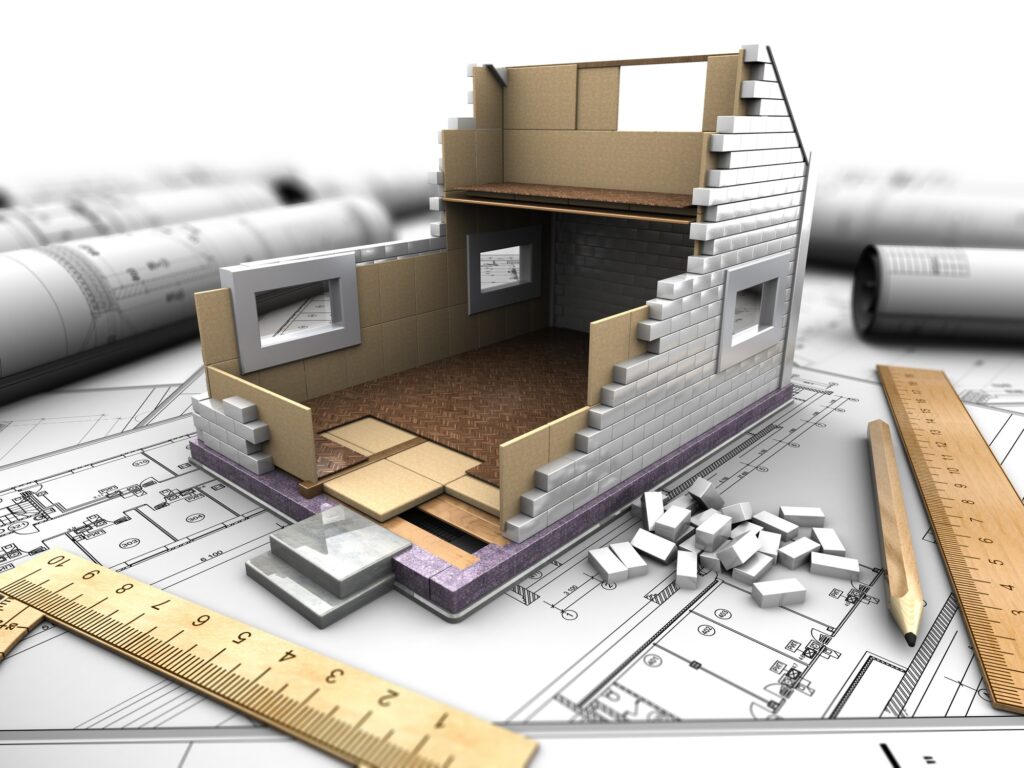The BIM revolution started 17 years ago when Revit made its debut in the digital and construction markets, which then catalysed a change in how collaboration in the construction industry works. The past five years, we have seen the speed of app developments geared around the disruption of the construction sector.
Multiple companies have been brewing up project management software with BIM integration capabilities trying to get a slice of the construction tech pie. The history of BIM has been leading up to this ultimate point of a new construction era and that the Urban Developer’s 2012 predictions regarding the future of BIM have been recently actualised.
The future is here
Predictions about BIM are outlined here with their present outcomes: Both construction companies and clients will save money. Private and government efforts have been saving money since using BIM or BIM-related technologies as evidenced by studies and programs implemented in the years 2010-2011.
A specific example would be the UK’s Construction Strategy in 2011. Their targeted savings of 15-20% has been achieved and reported in 2015. The savings came from the construction budget that was directly affected by and measured with BIM use.
Facilities Management will be actively demanded. In a 2014 McGraw Hill Smart Marketing Report (on the business value of BIM for building owners) reported that 95% of building owners will be adopting the use of BIM for all new constructions following the next two years.
By 2016, building owners already value the idea of a “living” BIM model. Building owners understand the benefits of investing in materials and systems that may cost more initially but would have better returns over the life of the building. Facilities Management models prove to be valuable in managing assets and forecasting ongoing capital improvement costs.
Roundtable networks and teams will emerge. In the original post, it predicted that consultant roundtable networks will emerge and will bid for projects as a group rather than as individuals and pass on the collective benefits to developers.
That has become indeed true. But on the other hand, developers have also been emerging with collective efforts to standardise construction processes as seen with the recent collaboration of Belgian Association of Contractors of Large Structures (ADEB-VBA) with LetsBuild.
![]()
People will get better and faster at BIM. We have seen the rise and how quickly it has been for people to adopt to the BIM system. Levels of skills in the industry have greatly improved especially in the past three years. A lot of people now design in BIM and clients are demanding more. BIM and lifecycle asset management, in fact, has become a must have. The rise of construction management systems that incorporate BIM is a testament that more and more people in the construction sector have adopted the use of BIM.
One software giant will reign. In 2012, it has been predicted that “one dominant software package will have gained market share and become ‘Industry Standard’, making collaboration between consultant teams of specialist disciplines much easier and less technical”. This has become pretty apparent the past 10 years and more so, the past 2 years.
Those who use BIM will deliver faster and more efficiently. Obviously, the gap between those who use and don’t use BIM proved to be pretty wide. That’s why everyone is adopting BIM and construction management software to keep up. By using BIM-related technology, a contractor dramatically reduces their RFI turnaround time from 27 to 5 days. That’s a pretty huge gap.
The improving economy will allow developers more choice of suppliers. With an improved economy and a $57 trillion worth by 2030, project risk is shifted to the quality of delivery, design, and documentation of a project. This gives developers the option of selecting the best team for the job, rather than the cheapest. With this leverage, developers have now set and demand the quality of work up to a set of specific standards.
New legal and contractual frameworks will emerge. With more collaborative and transparent design and development processes, the legal and contractual frameworks have greatly changed.
All major stakeholders have a direct contractual relationship with each other and they will have enforceable obligations between them concerning ownership and licensing of Intellectual Property, confidentiality, liability (both as between themselves and to third parties), insurance, and methods of dispute resolution.
Focus will move from BIM to IPD (Integrated Project Delivery). Indeed, it has. Projects are now being delivered by joint contractors and partnering clients. Truly, integrated project delivery is the practice.
Government requirements will also drive uptake. Currently, Australia, most states in the U.S., and most governments in Europe are following the path that the UK has set with regards to integrating BIM as a critical requirement in building infrastructure.
China and Japan have also been doing the same thing in Asia. The benefits in lifecycle management and construction cost and time have been setting up construction standards requiring BIM and BIM-related technology to be incorporated.
Back to the future
If the future is here, what is there to look forward to? Is there further future for BIM? In a recent article published in the Architecture, Engineering, Construction mag, an interview by Martyn Day with Autodesk’s Jim Awe revealed an exciting vision for the next generation of BIM tools.
The Autodesk team revealed a project that would “evolve the way BIM works, in the era of the cloud, by providing a common data environment,” This “future of BIM” would “connect ‘workspaces’, by breaking down the monolithic nature of typical AEC solutions, enabling data and logic to be anywhere on the network and available, on demand, in the right application for the task at hand.
These workspaces would be based on professional definitions, enabling architects, structural engineers, MEP professionals, fabricators and contractors access to the tools they need.” The vision for the product even involves a series of “quantum” applications, parametrics, and API that encompasses a “platform ecosystem” considered to be the future of a Design/Make/Use workflow for the AEC industry.
This piece is part of a series covering building information modelling (BIM). Supplement this with articles discussing what BIM is and its benefits to the construction industry, its history, the different roles in a BIM project cycle, its potentials and challenges, and the common myths surrounding its use. Download the free ebook to help your teams increase productivity and profitability.
![]()




